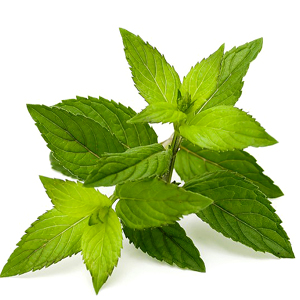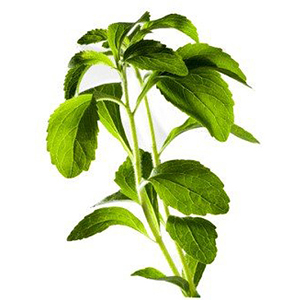No products
Candyleaf - 50g
Candyleaf (Stevia rebaudiana) - excellent for weight loss and diabetes. It is considered as a miracle and a sweetening of the new millennium. It is up to 300 times sweeter than regular sugar, yet has virtually no calories...
![]()
Content |   |
Binomial nameStevia rebaudiana Commonly called (often known as)Candyleaf, Sweetleaf or Sugarleaf StorageStore in a dry place at a temperature up to 25°C |
Description of herb
Candyleaf - a white flowering light-loving tropical plant native to the tropical and subtropical regions of South and Central America - is highly valued for its healing effects and especially for its high sweetness, making it a treasure not only for diabetics and calorie-conscious people, but for all fans of a healthy diet, because as a sweetener, unlike sugar, it is almost non-caloric and therefore does not even contribute to the formation of tooth decay.
Coca Cola already sells its Stevia glycoside-sweetened beverage at U.S.A. and in France. Like there, Danone offers yogurt flavored with this plant.
In November 2011, Stevia was approved in the European Union as a food additive under the designation E960.
Candyleaf is so sweet that a tablespoon of ground leaves replaces up to 30 tablespoons of sugar, and its sweetness has a specific spicy flavor that most people will fall in love with. However, when used in smaller quantities, for example in baking, its herbal taste is not well known.
Healing effects
Candyleaf is great for losing weight and diabetes and is talked about as a miracle and sweetener of the new millennium. It is up to 300 times sweeter than classic sugar. At the same time, it has virtually no calories.
It doesn't even raise blood sugar levels. On the contrary, it helps to stabilize it. Therefore, it can be a useful aid for diabetics and people who want to lose weight. Especially when they love treats and it's hard for them to survive without them or without sweet foods.
It is also a useful helper for those who are rewarded with sweets to endure exhausting psychological work. It is best to sweeten low-calorie foods, such as tea, with Candyleaf. That's when it brings the biggest effects. Both healthy people and diabetics who are trying to lose weight or maintain weight. Every extra kilogram poses a higher risk of other health complications.
Artificial, synthetically made sweeteners also taste sweeter than sugar. But unlike Candyleaf, we cannot talk about them as sweeteners of natural origin. And it is true that natural substances are more acceptable to the organism than those produced artificially.
Why is it that Candyleaf, also sometimes called sweet grass, honey leaves or even candy, has almost no energy? Our body cannot break down the cocktail of highly sweetening substances it contains. Experts refer to them as Stevia glycosides. They behave stably even at temperatures up to 250°C. Housewives can therefore use them for baking and other heat treatments. Of the artificial sweeteners, only sucralose or aspartame mixed with acesulfame can be used in this way.
The main component of Candyleaf is stevioside - a substance of non-sugar nature, easily soluble in water and very stable at higher temperatures and in various beverages or pastries. It is therefore suitable for the preparation of teas, diet meals, desserts and desserts. Eliminates many bacteria of the oral cavity, has a healing, protective and cleansing effect, which has a very positive effect on teeth, gums and skin, is suitable for increased formation of tartar and plaque, periodontitis and bad breath, prevents tooth decay. It is therefore also used in dentistry.
Candyleaf has antibacterial effects and promotes wound healing in case of thermal burns. It affects metabolism, lowers blood sugar and cholesterol levels, regulates energy and mineral management.
The use of Candyleaf does not burden the body like white sugar and thus has a direct effect on prolonging life expectancy.
Furthermore, Candyleaf improves the activity of the heart and blood vessels, thyroid gland, liver, kidneys, spleen. Normalizes blood pressure. It is suitable for joint diseases - osteoarthritis and osteochondrosis, it is successfully used in the treatment of obesity. It strengthens blood vessel walls, inhibits tumor growth and prevents the multiplication of pathogenic organisms. Candyleaf can also be used on the skin in the form of masks and compresses for eczema and dermatitis, for problematic skin and wrinkles around the eyes, etc., because it contains silicon, which is an important factor for skin quality.
Active substances
Stevia rebaudiana Bertoni is a plant rich in flavonoids, rutin, quarcetin, diterpene glycosides, chlorophyll, vitamins A, groups B, C, D, F, E and P, pectins, amino acids and minerals - silicon, calcium, potassium, magnesium, selenium, iron, chromium, manganese, zinc and more.
The most important is the complex of sweeteners contained in almost the entire plant outside the roots, especially in the leaves, and consists of several diterpene glycosides, collectively called stevioside. In addition to stevioside itself, the plant also contains rebaudioside A, which is sweeter than stevioside 1.3-1.5 times, rebaudioside C, D, E, dulcoside B and steviol bioside.
Properties
Antioxidant, anti-inflammatory, antibacterial, antiviral.
Recommended at
- Non-caloric sweetener for teas and dishes
- It increases insulin production and thus helps to reduce the symptoms of diabetes (diabetes mellitus II.)
- Reduces the symptoms of heartburn
- Improves digestion
- Mouthwash for rinsing or chewing leaves - reduces bad breath
in the prevention of tooth decay and periodontitis - It has a calming and healing effect to combat stings or healing wounds, acne or eczema
- Reduces fatigue and fatigue syndrome
- Reduces the craving for tobacco and alcoholic beverages
- Improves the activity of the heart and blood vessels, thyroid gland, liver, kidneys, spleen
- Normalizes blood pressure
- Joint diseases - osteoarthritis and osteochondrosis
- in the treatment of obesity
- eczema and dermatitis, with problematic skin and wrinkles around the eyes
Preparation and dosing
Candyleaf as a sweetener in hot drinks
5 dried leaves will reliably sweeten a larger cup of tea. Just throw them into boiling water and let it infuse for a few minutes, they can also be used repeatedly (similar to green tea leaves). Crushed leaves release sweetness more intensely.
Homemade extract from Candyleaf
The home-made concentrated extract can be prepared from a large number of dried Candyleaf leaves, which are stuffed into a container, preferably pre-ground or crushed in a mortar, poured into boiling water or boiled briefly and left to infuse for several hours. The more tickets there are, the stronger the concentrate you get. The strong decoction tastes even bittersweet, but after dilution the taste is excellent. The concentrate is suitable for storage in the refrigerator and can be used to taste various drinks, add it to fillings, puddings, fruit salads, ice cream and sorbets.
Side effects
There are no known side effects or adverse reactions.
REMEMBER: Tell all your health care providers about any complementary health practices you use. Give them a full picture of what you do to manage your health. This will help ensure coordinated and safe care.

